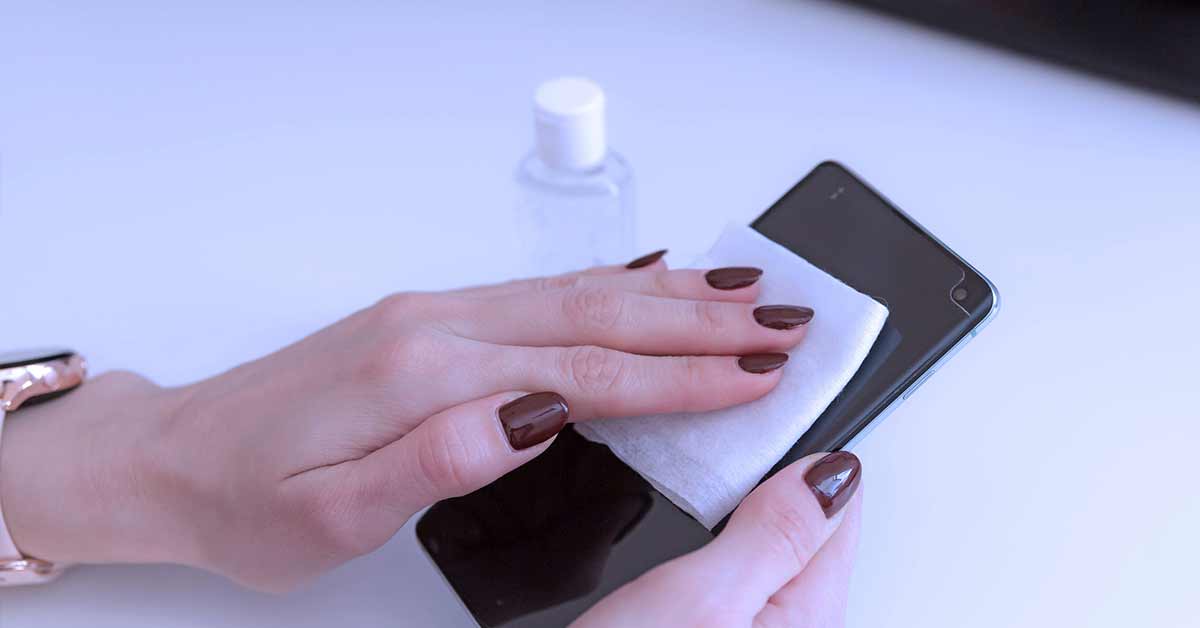advertisement
How to safely clean your smartphone
The outbreak of COVID-19 has encouraged consumers everywhere to be a little more vigilant and conscious of how exposed their…

The outbreak of COVID-19 has encouraged consumers everywhere to be a little more vigilant and conscious of how exposed their everyday behavior leaves them to harmful bacteria.
However, if you think your US $2000 flagship smartphone is immune to contamination, you’re fooling yourself. Like door handles, your smartphone is what the experts might call a high-contact point area. And unless you’re washing your hands (every time!) before you check those Facebook notifications, any bacteria that ends up on your hands is likely going to be spread onto your screen.
With that in mind, here’s a quick run-down of everything you need to know to clean your phone without breaking it:
advertisement
Things to avoid
Before we start cleaning your phone, here are some things to avoid doing:
As a general rule, it’s best to refrain from spraying cleaning solutions directly onto your device. Even if your phone or tablet has an IP rating or is marketed as water resistance, those durability tests are generally rated based on standardized tests with fresh water or dust particles – not cleaning solutions.
advertisement
If the ACCC says salt water is enough to invalidate Samsung’s claims about water resistance on their devices, it’s probably not worth gambling on how resilient your phone is to a full-on blast of GermKiller.
Another thing to avoid is wiping your screen down with pure alcohol. Since alcohol is slightly acidic, this can cause permanent damage to your display – especially if your phone’s has an oleophobic coating on it.
Avoid getting moisture near the charging ports on your device. A quick wipe down is fine but take care. Getting even a little bit of liquid here can interfere with its ability to charge – which is particularly problematic for devices that don’t support Qi or other forms of wireless charging.
advertisement
We all use our devices in fairly unsanitary conditions like the bathroom or bedroom. Of course, if you frequently wash your hands, that’s already going to bring the amount of bacteria you transfer to your phone down.
As per the World Health Organisation’s Q&A on the topic, “It is not certain how long the virus that causes COVID-19 survives on surfaces, but it seems to behave like other coronaviruses. Studies suggest that coronaviruses (including preliminary information on the COVID-19 virus) may persist on surfaces for a few hours or up to several days. This may vary under different conditions (e.g. type of surface, temperature or humidity of the environment).”
Lastly, and this should go without saying but, do not clean your device while charging it. Mixing active electrical connections and liquids is just asking for trouble.
Best practices
If you own an iPhone, Apple recommends using a Clorox Disinfecting Wipes to clean your device. Thankfully, for those living in parts of the world where that particular brand isn’t available, a 70% isopropyl wipe will do just as good.
If you own an Android phone, it might be worth skipping the wipes outright and picking up a microfibre cloth. If you’re just looking to do a light clean, dab the cloth in warm water and use that to gently clean your device. If you’re looking to dislodge some more tangible stains, feel free to add a little bit of soap. Just remember to be gentle with it.
What about UV cleaners?
Ultraviolet light cleaners are a category of smartphone accessory that have recently become more popular in recent years and are likely to continue to gain in popularity during the coronavirus pandemic.
We recently reviewed one in the form of the Lexon Oblio. This was a nifty vase-like wireless charger that would use UV-C light to kill bacteria on either side of your device when you put it down to charge. This crude sanitisation process took about twenty minutes in total and effectively kills off most of the germs on your device. Other ultraviolet light cleaning products work much the same way.
Compared to manually disinfecting your device by hand, UV cleaners can seem like a luxuriously hands-off alternative. However, the World Health Organisation advises that UV should not be used as a disinfectant for the coronavirus. UV-C cleaners should be treated as a compliment to traditional cleaning methods, rather than a replacement.